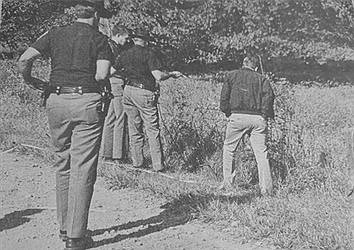Hoverflies bugging you? Learn about these friendly pests
August 23, 2023 at 12:00 a.m.

Indiana fields, farmsteads, and rural environments have recently witnessed swarms of "bee-like" flies, prompting curiosity among observers. These intriguing creatures are adult hover flies, also known as syrphid flies, and although they may bear a resemblance to bees or wasps, they have distinct characteristics worth exploring.
Hoverflies, belonging to the family Syrphidae, are insects commonly found in gardens, meadows, and areas abundant with flowering plants. Their name stems from their remarkable ability to hover in mid-air. While they may closely resemble bees or wasps, they can be distinguished by their hovering flight and the absence of a narrow waist between the thorax and abdomen. However, it is important to note that hoverflies are harmless to humans and lack the ability to bite or sting.
These insects play a vital role in the ecosystem as natural pest control agents. Hoverfly larvae, which resemble nondescript maggots, feed on soft-bodied insects such as aphids. Their presence is particularly valuable in cornfields, where certain species, like the Maize Calligrapher (Toxomerus politus), aid in plant pest control by consuming sap-sucking parasites. In return, the larvae receive nourishment. Furthermore, hoverflies contribute to pollination as "incidental" pollinators. When they seek nectar from plants relying on insect pollination, they inadvertently transfer pollen from flower to flower. In fact, hoverflies are considered the second most important group of pollinators worldwide, after wild bees.
Unlike sweat bees, hoverflies possess only one set of wings and have a brightly colored, hairless body. They lack a stinger and have large, compound eyes dominating their heads. Sweat bees, on the other hand, are typically dark or metallic in color, smaller than honey bees, and do possess stingers. Both hoverflies and sweat bees can be somewhat bothersome when they gather around humans for moisture and salts found in swea. Observing hoverflies in cornfields and other flowering crops, one is likely to encounter their larval form—a small, inconspicuous maggot—feeding in areas where pollen accumulates, such as leaf axils. The larvae resemble spent pollen anthers and take advantage of the abundant pollen supply. It is crucial to note that these larvae are not pests and do not harm the crops. This holds true for other flowering crops as well. Due to the staggered pollination resulting from a wet spring and delayed planting, hoverflies may continue to be seen for a few more weeks.
In conclusion, hoverflies are fascinating insects often mistaken for bees or wasps. Their ability to hover, beneficial role as pest control agents, and contribution to pollination make them valuable contributors to our ecosystem. While their presence may seem overwhelming at times, it is essential to appreciate their harmless nature and the benefits they bring to our surroundings.
You can create a natural repellent by cutting a lemon in half and inserting a clove in it. Once done, place repellent in spots where these flies swarm and the citrusy smell will repel them.
You can create another natural repellent using apple cider vinegar and water. Mix the vinegar with two parts water, and add some drops of peppermint oil, basil oil, and/or dishwashing soap. Put this solution in a spray bottle, and sprinkle it on fly-infested areas. The pungent and strong smell will drive them away.
Latest News
E-Editions
Events
Indiana fields, farmsteads, and rural environments have recently witnessed swarms of "bee-like" flies, prompting curiosity among observers. These intriguing creatures are adult hover flies, also known as syrphid flies, and although they may bear a resemblance to bees or wasps, they have distinct characteristics worth exploring.
Hoverflies, belonging to the family Syrphidae, are insects commonly found in gardens, meadows, and areas abundant with flowering plants. Their name stems from their remarkable ability to hover in mid-air. While they may closely resemble bees or wasps, they can be distinguished by their hovering flight and the absence of a narrow waist between the thorax and abdomen. However, it is important to note that hoverflies are harmless to humans and lack the ability to bite or sting.
These insects play a vital role in the ecosystem as natural pest control agents. Hoverfly larvae, which resemble nondescript maggots, feed on soft-bodied insects such as aphids. Their presence is particularly valuable in cornfields, where certain species, like the Maize Calligrapher (Toxomerus politus), aid in plant pest control by consuming sap-sucking parasites. In return, the larvae receive nourishment. Furthermore, hoverflies contribute to pollination as "incidental" pollinators. When they seek nectar from plants relying on insect pollination, they inadvertently transfer pollen from flower to flower. In fact, hoverflies are considered the second most important group of pollinators worldwide, after wild bees.
Unlike sweat bees, hoverflies possess only one set of wings and have a brightly colored, hairless body. They lack a stinger and have large, compound eyes dominating their heads. Sweat bees, on the other hand, are typically dark or metallic in color, smaller than honey bees, and do possess stingers. Both hoverflies and sweat bees can be somewhat bothersome when they gather around humans for moisture and salts found in swea. Observing hoverflies in cornfields and other flowering crops, one is likely to encounter their larval form—a small, inconspicuous maggot—feeding in areas where pollen accumulates, such as leaf axils. The larvae resemble spent pollen anthers and take advantage of the abundant pollen supply. It is crucial to note that these larvae are not pests and do not harm the crops. This holds true for other flowering crops as well. Due to the staggered pollination resulting from a wet spring and delayed planting, hoverflies may continue to be seen for a few more weeks.
In conclusion, hoverflies are fascinating insects often mistaken for bees or wasps. Their ability to hover, beneficial role as pest control agents, and contribution to pollination make them valuable contributors to our ecosystem. While their presence may seem overwhelming at times, it is essential to appreciate their harmless nature and the benefits they bring to our surroundings.
You can create a natural repellent by cutting a lemon in half and inserting a clove in it. Once done, place repellent in spots where these flies swarm and the citrusy smell will repel them.
You can create another natural repellent using apple cider vinegar and water. Mix the vinegar with two parts water, and add some drops of peppermint oil, basil oil, and/or dishwashing soap. Put this solution in a spray bottle, and sprinkle it on fly-infested areas. The pungent and strong smell will drive them away.





